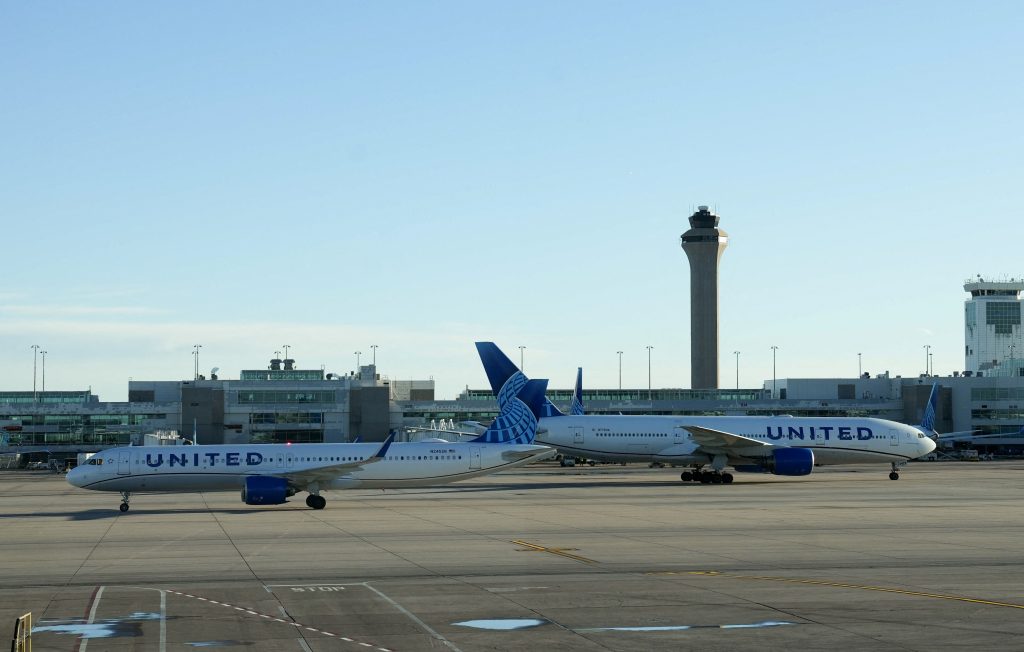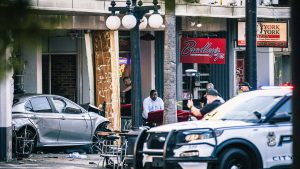Troubled skies: Officials try to ease concerns after towers lose comms

As many as 20 airplanes were approaching Denver International Airport on Monday, May 12, when the unthinkable happened. The planes’ radio communications with air traffic controllers suddenly went down, leaving the pilots, and their passengers, on their own in the crowded skies.
Thankfully, no planes collided or crashed because of the radio outage. However, with the summer travel season fast approaching, the episode underscored the increasingly obvious failings in the nation’s aging air safety system.
What happened in Denver?
Ground-to-air radio contact failed around 2 p.m. on Monday at the Denver airport, which typically handles between 1,700 and 2,000 flights a day. Controllers normally use the frequencies to instruct pilots on how to maintain safe distances from other aircraft, a key part of preventing midair or ground collisions.
Unbiased. Straight Facts.TM
Among the benefits available to air traffic controllers is leave for stress-related trauma. Controllers often work 60-hour weeks and are on duty for days without time off.

Five radio frequencies failed over the course of several minutes, according to KMGH-TV in Denver. Finally, a controller contacted one pilot on an emergency line, normally reserved for distress calls. That pilot then relayed the message to others approaching the airport.
Normal communications were restored in less than two minutes, the Federal Aviation Administration said, although KMGH reported the outage may have lasted as long as six minutes.
The FAA did not publicly comment on the outage until news organizations reported on the incident three days later. In a statement to The Denver Post, the agency said that “aircraft remained safely separated and there were no impacts to operations.”
David Riley, a retired air traffic controller in Denver, told KMGH that outdated equipment caused the incident.
“It’s one thing to lose track of one airplane because you can’t communicate with them,” Riley said.
But with so many planes flying at once without direction from the control tower, he said, the likelihood of disaster increased exponentially.
Anxiety in the towers
Breakdowns like the one in Denver create enormous stress for air traffic controllers, Riley said.
“In this situation, they still had radar coverage,” he told KMGH. “But that’s like watching a car crash happen and not be able to do anything about it.”
The Wall Street Journal recently spoke with an air traffic controller who watched on his radar screen as a business jet and a small plane headed toward each other in the skies over New Jersey. Jonathan Stewart said he was able to reach both pilots by radio with instructions on how to maneuver away from each other. But for one high-stress moment, he was afraid the radio would fail, as it had a few days earlier.
Afterward, Stewart went on leave for stress-related trauma — a benefit offered to all air traffic controllers.
“I don’t want to be responsible for killing 400 people,” Stewart told the Journal.
At the time of the near-collision, Stewart had been working more than three hours without a break, directing planes at busy Newark Liberty International and other airports. Controllers frequently work 60-hour weeks and show up for duty for days on end without breaks, he explained.
“The situation is, has been and continues to be unsafe,” Stewart wrote in an internal report reviewed by the Journal. He added, “The amount of stress we are under is insurmountable.”
Troubles in the air
This has been a challenging year for air safety in the United States.
The nation experienced its deadliest air disaster in almost a quarter-century on Jan. 29, when an American Airlines jet collided with an Army Black Hawk helicopter near Reagan National Airport near Washington.
The official cause of the crash has not been determined. But The New York Times reported that an air traffic controller alerted the helicopter pilot that the passenger jet was nearby. The controller gave the pilot permission to execute a procedure known as “visual separation,” in which she was supposed to navigate around the airliner without specific instructions from the tower. But the procedure failed, and 67 people, everyone aboard both aircraft, perished.
Other near-misses followed that crash, and on April 28, radar feeds and radio communications failed at Newark, leaving controllers briefly in the dark about the movement of aircraft in the busy New York City airspace.
The FAA said additional communications outages occurred on May 9 and May 11 at a regional air traffic center in Philadelphia that monitors the Newark airport.
According to Gothamist, computers at the Newark control towers operate on floppy disks and copper wire rather than fiber optic cables, which transmit flight-path data.
And the Times reported that on one recent shift, only three air traffic controllers were on duty. Full staffing requires 14 controllers.
New safety proposals
Federal officials say recent incidents show upgrades to the air traffic control system are long overdue.
“We should be using fiber, but it’s copper,” Transportation Secretary Sean Duffy said at a news conference on May 8. “We use radar from the 1970s. So, this technology is 50 years old that our controllers use to scan the skies and keep airplanes separated from one another.”
Duffy is asking Congress to appropriate $18 billion to hire and train 2,500 new air traffic controllers, replace outdated radar systems and install high-speed connections and new computers for control towers. When he presented the proposal to a House committee during the week of May 4, Republican and Democratic lawmakers alike pledged to work on securing the funding.
“Everybody in America flies,” Duffy said. “This is not partisan.”





